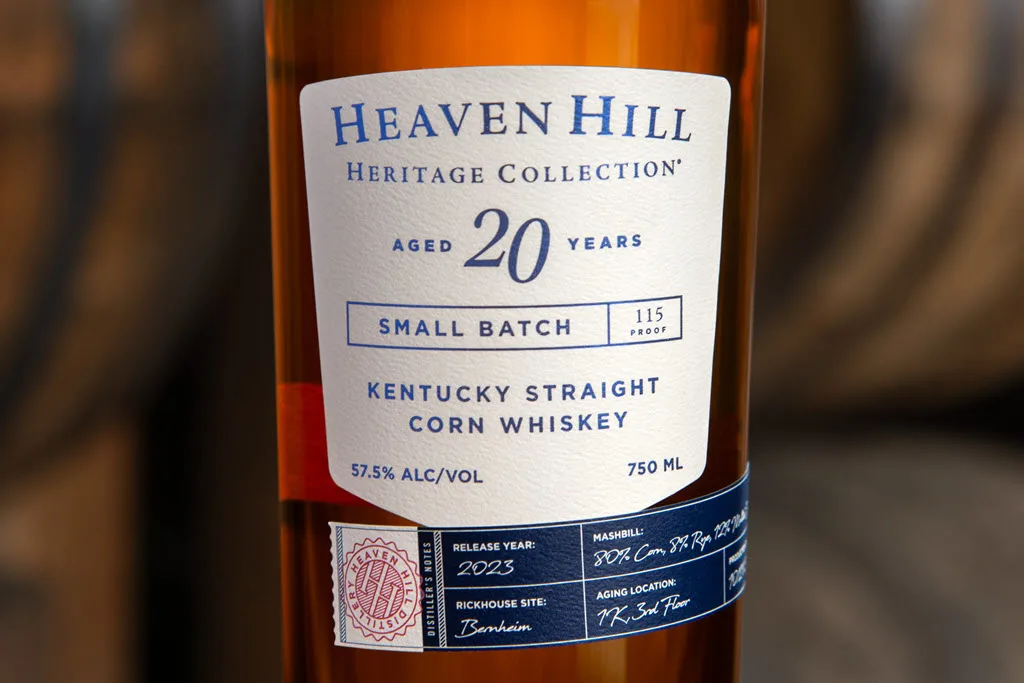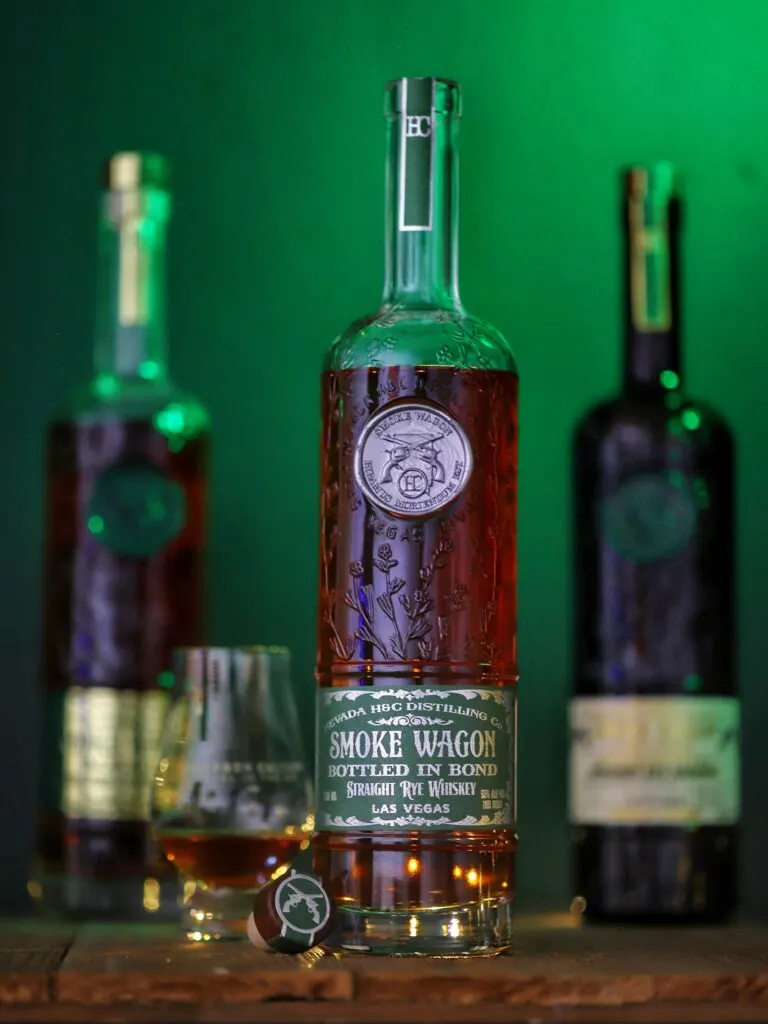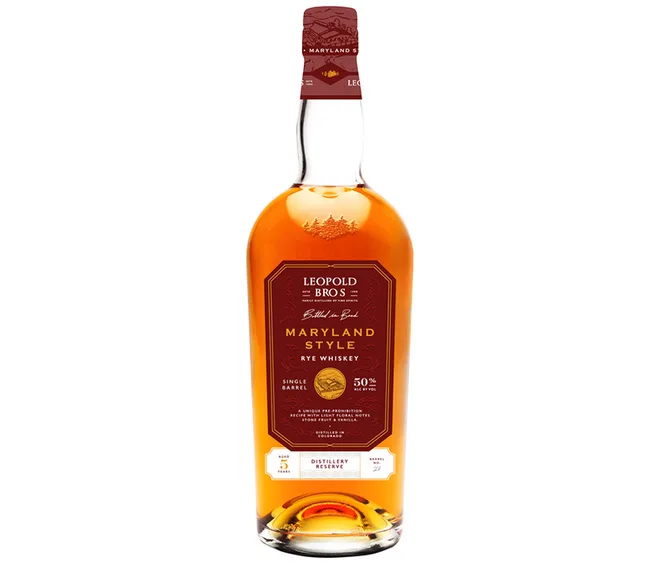| Don't like ads? | No ads |
Since we talk so much about bourbon here on our website, I tend to forget that there are a lot of people out there wondering about our opinions on other styles of whiskey. Today, I’m going to go in-depth on two of those styles – Corn Whiskey and Rye Whiskey.
If you’re a long-time reader of The Bourbon Culture, you know I already review a lot of rye whiskey – but not a lot of corn whiskey. There is a reason for that but first let’s find out the main differences that separates the two.
Corn Whiskey, explained
Let’s start with Corn Whiskey first. I’m going to jump right into it and dispel a rumor I hear whenever corn whiskey is brought up. The rumor is that Corn Whiskey has to be distilled from 100 percent corn. It’s not true. Could it be? Yes!
But the top two producers of Corn Whiskey by volume in the US right now are Heaven Hill and MGP Ingredients (also referred to as the Ross and Squibb Distillery in Indiana). These two distilleries use a somewhat similar corn mash bill that contain both rye and malted barley in them.

By US law, a corn whiskey must have at least 80% corn in the mash. This leaves room for adding a little bit of a flavor to the grain mash (like rye) as well as malted barley for the enzymes it brings to the fermenting process.
Corn whiskey also doesn’t have to be aged in new charred oak barrels! Most producers that make a corn whiskey do elect to age it in a barrel (more on that in a minute), but very few bottle up an unaged corn whiskey (which would be called White Dog) because they know it’s a poor seller. That’s why you see corn whiskey that has been aged in a used barrel.
The law actually states that corn whiskey cannot be used in new charred American oak barrels. If it was, chances are high that it would actually fit into the definition of a Bourbon (provided it meets all the other rules of being a bourbon).
The reason that corn whiskey is something that distilleries even bother to produce (and why it’s so cheap to do so) is because they have already spent the money into the most expensive part of making bourbon or rye whiskey – the barrel itself.
Most wooden barrels will cost anywhere between $200 and $400 depending on bulk discounts or even how complex the barrel is. What do I mean by that? Barrel costs are determined by how long the staves were air dried (seasoned), if the oak was a special variety or if it was toasted first.
By contrast, it probably costs a distillery $40-50 to fill up a barrel with 53 gallons of new-make whiskey. So if a distillery decides to make corn whiskey, the only cost they accrue is the cost to fill it back up again. That’s why most bottles of corn whiskey are about 1/3 the price of bourbon and usually have screw caps (to cut down on costs even more).

What does Corn Whiskey taste like?
Well since it’s close cousins to bourbon, you’re going to find some similarities. There is a sweeter taste that is similar to the candy corn you get during Halloween. There’s even some cinnamon spice and notes of vanilla.
If you’re familiar with how artificial vanilla is made (hint, it’s done with corn), you’ll see why they’re similar. But without the help of a newly charred barrel to help develop the whiskey, the overall flavor leans heavily towards “cornbread.”

Why use new oak barrels?
Let’s look into what a new charred oak barrel does that a used barrel doesn’t do. The answer within the interior of the barrel. When a barrel starts out brand new, the inside is usually sprayed with some alcohol and lit on fire for a period of time.
This results in the formation of a layer of charcoal on the surface of the oak. As the seasons change and the whiskey inside gets pushed in and pulled out of the oak through that layer of charcoal, it’s actively trapping chemical compounds that create off-putting flavors and scents.
Just like water filters use active an charcoal filter to make your water taste better by removing impurities, the charred oak staves of a whiskey barrel do the same thing.

When a bourbon or rye whiskey is dumped from a barrel after several years of resting, a lot of that char comes out with it (and is usually filtered before it leaves the bottle). This leaves the inside of the barrel missing the charred surface in some spots.
The remaining charred areas are already exhausted after several seasons of filtering the whiskey within. Just like the active charcoal filters I talked about earlier, even they have a limit as to how much they can filter before they are too worn out to do the job anymore.
The oak staves are also full of whiskey within their grain structure. It’s been said that the average used barrel contains 2 to 3 gallons of whiskey trapped deep inside of the oak. This further limits the ability of the wood to exert its influence onto the whiskey since it’s already saturated.

The bottom line is this; corn whiskey was never designed to be some sort of whiskey that gets better and more refined with each passing year. It was designed as a cheap whiskey for consumers that don’t care one way or another.
It’s different enough from a bourbon to spark curiosity for most consumers, but that’s as far as it goes.
Don’t be fooled by the small group of enthusiasts out there that seem to worship corn whiskey over all others, their obsession is more of a cultural irony much like hipsters that say they prefer Pabst Blue Ribbon over virtually any other type of beer.
Now that you know about corn whiskey, here are some whiskey types to be on the lookout for:
- Mellow Corn
- MGP Corn Whiskey
- Fitch’s Goat
- Spirits of French Lick – George E Ballard
- George Dickel Unaged Corn Whiskey (which is actually the same recipe – 84% corn, 8% rye, 8% malted barley – as their bourbon whiskey except that it has not been aged)
Rye Whiskey, explained
Where to begin about rye whiskey? Well, technically rye whiskey is up on a pedestal of spirits that helped shape America in our early days.
People might be familiar with bourbon and how that came to be – farmers west of the Appalachian Mountains found it extremely hard and unprofitable to sell their grain (corn) back east. Rail systems weren’t a thing back then and travelling by boat took too long.
The answer was to distill their grain into whiskey so that it could be transported easily. It also was very profitable and is also the reason why bourbon’s home was solidified in a state that is west of the Appalachian Mountains.
But rye whiskey was already being made and sold in large amounts in east coast states. Farmers all across Pennsylvania and Maryland used their knowledge of distilling to convert their plentiful rye grain (which could grow anywhere) into a spicy whiskey. It continued to be a dominant spirit in American culture up to Prohibition.

When Prohibition ended (and WW2, which put a damper on bourbon production), American tastes had changed. Nobody was buying rye whiskey, so producers made very little of it.
By the 1980’s, all of the famous rye whiskey brands that were based in Pennsylvania or Maryland ceased to exist. It wasn’t until cocktail culture (and, in my opinion, Foodie Culture) took hold of America at the turn of the millennium that the demand for rye whiskey grew.
Everyone started to make it again. And while it still lags behind bourbon in terms of total sales volume, it has been growing by leaps and bounds.

Rye Whiskey Production
So what makes a rye whiskey, a rye whiskey? Well for the most part, take everything you know about the laws of bourbon and substitute the words “corn” with “rye.” It’s not exactly as simple as that, but we’ll get there.
American rye whiskey has to start with least 51 percent rye grain or more by law. It also has to be aged in a new charred oak cask. All of the rules about how high it can be distilled to (160 proof, max) and how high it can be barreled at (no more than 125 proof) still remain true, just like in bourbon.
If a rye whiskey isn’t labeled “Straight” that means it can have up to 2.5% of additives added to it by volume. That’s one of the major differences from bourbon though because traditional bourbon can’t have anything added to it whatsoever.
Different Types of Rye Whiskey
Kentucky: There are so many different types of whiskey out there. Unlike bourbon, which doesn’t deviate too much from distillery to distillery, rye whiskey is made differently depending on where it’s being made.
Distilleries in Kentucky often use the bare minimum of rye whiskey that they have to. This is why most Kentucky distilleries have a rye mash bill that are around 51-53%. The rest is corn with a small amount of malted barley.

Not all Kentucky distilleries adhere to this – Old Forester’s “Normandie” rye whiskey recipe calls for a mash bill where rye makes up 65% of the total grain used.
There are some distilleries like New Riff, Green River Distilling and Bardstown Bourbon Company that have recipes using rye grain as 95% of their mash bill. They have likely borrowed that recipe from the king of rye whiskey producers: the MGP-owned distillery in Lawrenceburg, Indiana.

Indiana: Rye whiskey and Indiana are practically synonymous. The giant distillery, which butts up against Ohio and Kentucky along the Ohio River, was owned and operated by Seagram’s. The name still exists on the tops of the buildings to this day (also because the name is embedded inside of the bricks).
That distillery has gone through many owners and many name changes since 2000 when it was sold. Currently it’s named the Ross and Squibb Distillery, but most people simply refer to it as “MGP” (for Midwest Grain Producers, the company that owns it).
Seagram’s was the only ones making a rye whiskey in large enough quantities that when the whiskey boom began around 2005, they were able to sell off large stocks to bottlers that wanted to sell it.
The classic rye recipe of 95% rye and 5% malted barley was a hit and has been put into everything from Bulleit Rye to Templeton Rye to George Dickel Chill Filtered Rye. This isn’t without merit, the 95/5 rye whiskey mash bill has been arguably one of the best reviewed rye whiskies over the years.

Pennsylvania and Maryland: Both are back on the map recently with a slew of craft distilleries starting to produce rye whiskey in the methods that their states were known for. Most Pennsylvania styles of rye whiskey were made with a grain bill containing 100% rye.
This was commonly referred to as “Pure Rye” on the label back before Prohibition. Two distilleries (possibly more) have even resurrected a particular breed of rye (called Rosen) from a seed vault and have found farmers to make more of it.
It was a very spicy, bold rye whiskey that was totally different from the kinds found today. Maryland styles usually contained a small amount of corn or even wheat to help sweeten up the whiskey and take the edge off of the spicier flavor and has been epitomized by a giant new distillery in Baltimore known as Sagamore Spirit.

Malted Rye: There are a small subset of craft distilleries that have chosen to use rye grain that has been malted in their rye whiskies. When we talk about the rye grain in virtually 99% of whiskies out there, it’s never malted.
There are a variety of reasons but most boil down to cost and different flavor profiles. The malting process, as you may know, involves spreading the grain out on a malting floor and sprinkling it with water until it begins to sprout. Heat (much like a kiln) is applied to terminate the sprouting process, then the grain is milled like it normally would be.
Now the grain has taken on a totally new flavor profile due to the starches converting inside. There are even some producers who choose to heat/toast the grain even more to give it a darker flavor. This designation is commonly referred to as “chocolate” which the color does come off as.
In my experience, the flavors from malted rye or chocolate malted rye usually result in a profile similar to chocolate covered coffee beans. A downside is the malting process loses a lot of spice and fruit notes if the distiller uses too much of it. This kind of rye is not for everybody but there is a growing fanbase who like it.

Canadian: Lastly, there are Canadian Whiskies which are a whole other breed, but are worth mentioning. There are more and more rye whiskies on the shelves today wearing high age statements and high proofs (over 120 proof) but don’t necessarily wear a high price tag.
Look at the back of the label carefully and you might see “Product of Canada” on it. What’s strange is that some of them can be found in the American whiskey section of your liquor store instead of with Crown Royal, JP Wisers and the other Canadian-made whiskey.
This is strange because both the USA and Canada have very different rules on what constitutes a rye whiskey.
In the US, the rules are pretty black and white on what makes a rye whiskey. But in Canada, a rye whisky doesn’t even have to contain any rye grain at all as long as it has the “character” of a rye whiskey.
This is extremely subjective and seems unbelievable, but it’s true. Canada also allows up to 9.9% of the total volume of the whiskey to contain additives if they so choose.
It’s not known just how many producers take advantage of this, but an important description to look for when dealing with these kinds of whiskies is “no colors or additives added.” Canadian rye whiskey tends to be very floral and grassy and sometimes smells like springtime in a bottle.
They can be harsh and astringent sometimes too. That’s likely due to a lot of them using 100% rye grain in their mash bills.
A lot of Canadian whisky out there is also aged in used barrels (much like the corn whiskey I talked about above) and is distilled and barreled at proofs that are much higher than those here in the United States.
The reason why you see a lot of barrel strength Canadian rye whiskies being bottled between 125 and 140 proof is because the distillate was put into the barrel at around 140 proof. This will create a cleaner, lighter flavor overall and one that becomes very easy to sip when proofed down due to the lack of body.
What Does Rye Whiskey Taste Like?
Rye Whiskey is going to give you a spicy flavor kick that bourbon never could. Be warned, it’s not for everyone at first sip. But when you do start finally appreciating it, you’ll be surprised how quickly you reach for a bottle of rye whiskey over bourbon for your next pour.
Rye has the nature to impart tons of fruit flavors and scents as well as flavors that I can only categorize as “Green.” I break those down into three sub-categories. The first is your herbal notes like dill, oregano, marjoram or mint.
The second are botanical notes like eucalyptus or the scent of a wet forest floor. Lastly are floral notes. I compare these scents and flavors closely to the kinds of flowers you may have given (or received) to a loved one.
Rose petals are most common with lilacs and mums a close second. Hand soaps also do a pretty good interpretation of these scents as well.
Last, but not least, rye is known for its spicy flavor. Relax, it’s not like I’m luring you into drinking chili oil, but you will find everything from black and white pepper to red pepper flakes to even spicy Vietnamese Cinnamon.
My most favorite rye spices are commonly referred to as “Baking Spices” which include all of the holiday favorites like nutmeg, clove, allspice and star anise (licorice is a prized flavor to find in rye whiskey). All in all, rye whiskey offers a wider sensory experience than virtually any other major American whiskey styles out there.
Here are some common examples of rye whiskies
Kentucky:
- Wild Turkey Rye Whiskey 101 and 81 proof versions
- Russell’s Reserve 6 Year Rye Whiskey
- Russell’s Reserve Single Barrel Rye Whiskey
- Sazerac Rye
- EH Taylor Straight Rye Whiskey
- Rittenhouse Rye
- Pikesville Rye Whiskey
- Knob Creek Single Barrel Rye Whiskey
- Michter’s Single Barrel Rye Whiskey
- Old Forester 100 Proof Rye Whiskey
- Woodford Reserve Rye Whiskey
Indiana Rye Whiskey:
- Rossville Union Rye Whiskey
- Templeton Rye Whiskey
- Bulleit Rye Whiskey
- George Dickel Chill Filtered Rye Whiskey
- Old Hamer Double Barreled Rye Whiskey
- Nashville Barrel Co
- Smooth Ambler Old Scout Rye Whiskey
Pennsylvania and Maryland Rye Whiskey:
- Dad’s Hat
- Stoll and Wolfe
- Sagamore Spirt
- Baltimore Spirit Co Epoch
- Wigle
Malted Rye Whiskey:
- New Riff 6 Year Old Malted Rye Whiskey
- Mile High Spirits Fireside Rye Whiskey
- Corsair Ryemageddon
- Woodford Reserve Chocolate Malted Rye
- Little Book Chapter 5
Canadian Rye Whisky:
- Lot No 40
- Alberta Premium
- Barrell Craft Spirits Gray and Gold Label Seagrass
- Lock, Stock and Barrel, Hochstadters
- Down Home Rye Whiskey Batch 1 (127 Proof)
- Whistlepig
Featured Products
- Neat Traveler

- View Larger
- Description:The Aged & Ore Neat Traveler is a complete travel kit for spirits. We combined our widely praised Neat Glass with one of our 3oz Flight Bottles and housed them together in a custom EVA travel case. Perfect for a night away with your favorite pour. The tie
- Bottle Flight

- View Larger
- Description:The Aged & Ore Bottle Flight is a premium set of 4 custom silicone wrapped glass bottles designed to transport and share samples of your favorite spirits. The flight bottles come in a custom EVA travel case that fits perfectly in any small bag. An Aged &
- Travel Bundle

- View Larger
- Description:This Bundle combines two of our crowd favorite products, creating the ultimate travel bundle to bring along your favorite spirits and glassware. Bundle Includes: Neat Traveler (Gray) Bottle Flight (Gray) Note: This bundle is only available in gray and col
*Bourbon Culture is reader-supported. When you buy through links on our site, we may earn an affiliate commission.

